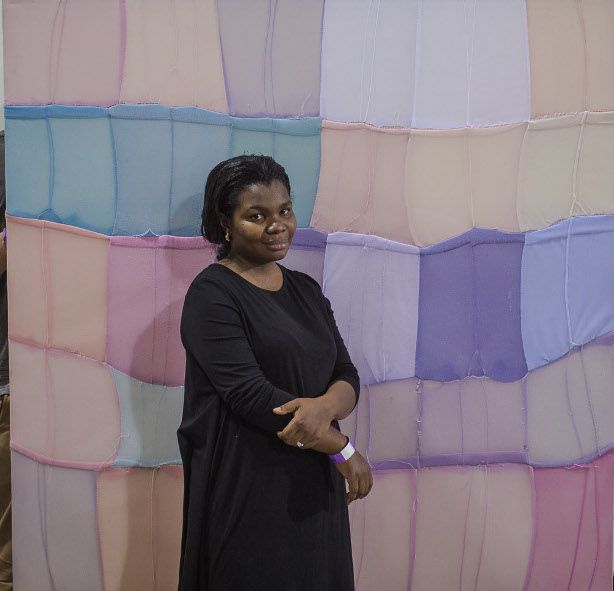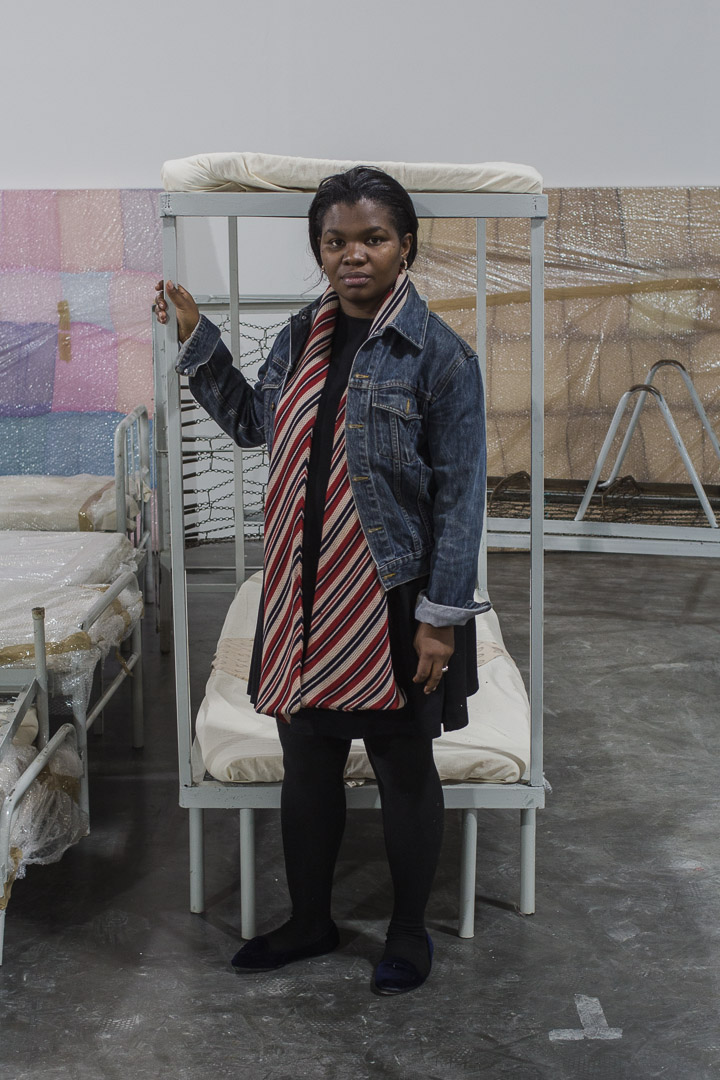Turiya Magadlela insists that she does not make social or political commentary in her art
TV appearances, telephone interviews and frantic preparations for her upcoming exhibition takes up most of artist Turiya Magadlela’s time these days. So tracking her down for an interview is not easy.
The Soweto-born artist, who juggles a day job with a thriving art career, is the winner of the FNB Art prize. She will present her body of work, titled Imihuzuko, at the fair this weekend. Magadlela won the award, which comes with a R100 000 purse, following her acclaimed show, Kaffersheet, at the Johannesburg Art Gallery earlier this year.
The prize was judged by eminent curators Bisi Silva from Nigeria and Koyo Kouoh from Senegal. With its arresting, large-scale installation of prison beds and abstract work created of prison sheets and traditional Xhosa cloth, Kaffersheet comments on freedom by highlighting the incarceration of iconic South Africans over the decades, specifically Xhosa leaders and prophets such as Makhanda Nxele.
You haven’t had the opportunity to be a full-time artist. Will the prize change that?
I am already getting a lot of exposure because of the prize — now all I need to do is work consistently, be myself and tell my story. I need to keep focused and remember every day that art-making is a job like any other. Only time can tell my destiny. I can’t predict the future.
Your recent Johannesburg Art Gallery show can also be read as a comment on institutions such as museums or galleries, which have at times been criticised for whitewashing history or marginalising black artists. Is this the case?
I make my work from my personal life experiences. I don’t make social or political commentary. Should my work seem or look political, that makes me happy. I always want to leave it open to the viewer’s personal interpretation, and I find that talking about a work you made or writing about it narrows down the meaning that it is supposed to have. So I wouldn’t disagree with your comment.
However, I never went out of my way to criticise the gallery. or any institution in this country. It concerns me and worries me, but I don’t sit around agonising about it.

Do materials influence the greater idea behind your work?
Kaffersheet was derived from my fascination with that word. I am Xhosa and our traditional gear is made of “kaffir sheet” — that’s what it’s called at the Indian shops. This is probably what Nongqawuse was wearing when she spoke of her prophecy; what Hintsa was wearing when he was captured; what Langalibalele wore when he was sentenced to prison on Robben Island, even though he is photographed wearing a suit and torn shoes in jail.
I imagine these people were respected in the community and they probably wore their clothes with pride, the clothes made of a cloth called kaffir sheet or “kay sheet” [as it is now known]. I have so much to say in my work. I can’t use words as I would limit myself, nor can I use realistic pictures as that too would limit me. However, if I use form, emotive fabric, emotions and at times a lack of colour then I leave blank spaces for the viewer to fill in the gaps, so that the work can speak for itself and is not dictated by me.
Where did the idea for Imihuzuko come about?
Imihuzuko, pronounced imiguzuko, is a collective of all this pain. All of this encompasses the pain of human experience, and in making my work and presenting it, I want to evoke the viewer’s imihuzukos in a sense.
How much of Kaffersheet will be incorporated in Imihuzuko?
The show will feature some work from Kaffersheet. There will also be work from the series Everybody Knows UFeela (2012). There may be new work as well but Imihuzuko is a collective of all these multiple pains; multiple grazes. I make art, I create, I am an artist but not a curator. The curator will decide how to put these multiple pains in a space.
Your use of pantyhose in your work is profound, as the material is so layered with meaning. Why do you use it?
Fragility, transparency, beauty, pain, distortions and liberations of a woman: that’s why.
And prison sheeting?
Where you will sleep tonight is not determined by you as an African. You may be [Xhosa prophet Makhanda] Nxele leading a people today and you may be in jail tomorrow. Ask a common criminal; he drinks expensive stuff today and tomorrow morning he is in a lice-infested cell. I have never had these experiences. I can only imagine them. I only know that freedom is not a permanent space.

What was your intention for the Imihuzuko body of work?
As I said earlier, I don’t make social commentary in my art — I leave that to the viewer. I make personal art about Turiya, art that I hope will evoke your pain or your political frame of mind. The only person whose stories hit me hard are the unwritten painful stories of South African men and women. I identify with Turiya more than I do with mass-media characters.
I hear you’re planning an exhibition at Blank Projects in Cape Town in October?
The show will be my second solo project at blank. It opens on October 15 and will feature new, unseen work.
Imihuzuko is at the FNB Joburg Art Fair, from September 11 to 13. Visit fnbjoburgartfair.co.za